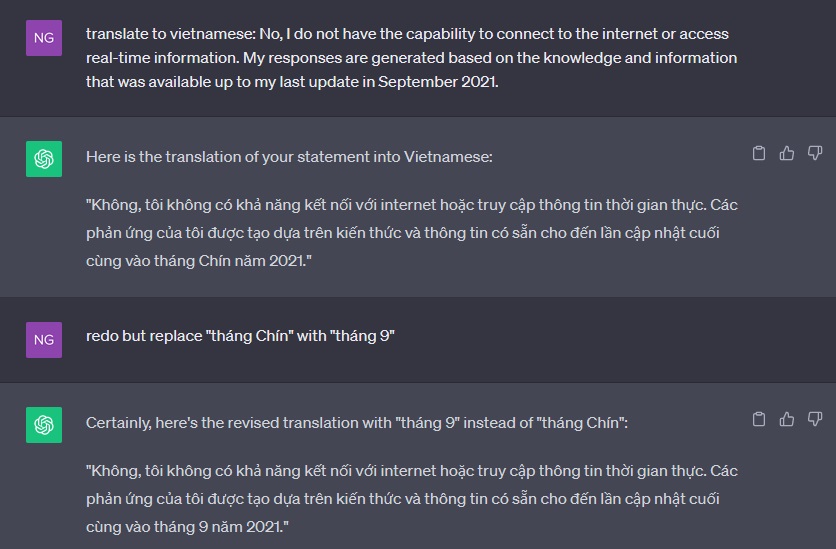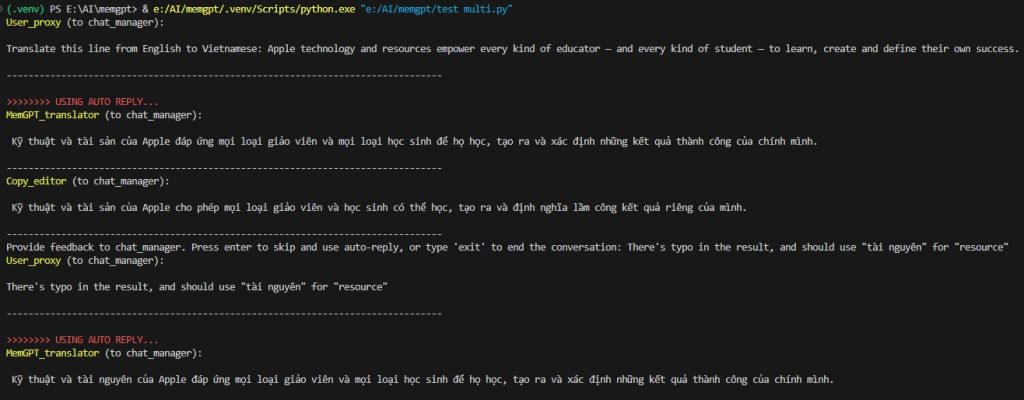AI can do countless things much more efficiently than us human. That’s a fact and it’s still evolving non-stop. In a post in Sept’ 23, I talked about AI’s impressive performance in translating, from English to Vietnamese and back. After that, the quality only got better.
As an elaboration, I used to ignore every single machine-assisted translation given by cloud translation tools, like Smartling, but lately, those suggestions have been too good to ignore. What’s the point of ignoring them and retyping almost the same words it suggested? Instead, I believe editing them would help save tons of time and bring better results.
Today, for linguists, I’m showing you another example of how advanced technology is (or was?), how the AI tools would transform our workflow.
Before reading on, please be assured that this is not fear-mongering, this is as real as reality itself. This has already been on the roll for a while, and I, we need to catch up.
By now, you should be well aware that tools like ChatGPT, Google Translate, Microsoft Translator,… can help you translate any amount of words, on most if not all topics, and base on the output quality and your needs, you can choose how to proceed afterwards: use it as is, edit, etc. And with advanced tools like ChatGPT, you can give more context, specify how you want it to translate a specific word, for the output to match your preferences.

So what’s new? Not long after the introduction of the open-sourced large language models, we see a lot of amazing tools like ChatDev, AutoGen that can have the AI agents automatically work together to write, execute, debug codes to some levels, just like a team of real human.
Based on that concept, I tried to set up a duo of AI-Translator and AI-Editor that work together to have a final translation. The process included MemGPT, AutoGen, and an LLM (I used one specialized in code generation – OpenHermes 2.5).
See below how they worked together:

AutoGen made the chain discussion part possible, MemGPT helped memorize everything, and the LLM took care of the translation. The model was not specialized in/fine-tuned for English-Vietnamese translation so the result is not that amazing. But you can see that the Editor – which I gave the role (through a prompt in the code snippet) of editing, using more suitable words – did present some corrections.
The process can be definitely improved, and the result too. We can even add more ‘roles’ to the discussion like Brand Manager, Creative Director,… for extra input, give them their purposes, add in detailed context, etc. to achieve a even more satisfying result.
That said, this is a simple experiment by me – an amateur, and out there, talented teams behind Smartling, XTM, Trados,… might have gotten very far ahead of this, and may soon introduce well polished tools at the Enterprise level.
These AI news and tools come to me as I notice that language tasks from my clients seem to be lower in volumes; and this video by VnExpress (regarding the layoff of a huge number of IT technicians, citing that their company now receive less and less outsourcing requests from clients from across the world) some how corroborated my observation. This too may be true to so many more fields on the market right now. Of course, AI is one of and is not the sole factor.
So… the abovementioned experiment brought me both concerns and excitement. And I’ll be watching the development of such tools closely, while also try to come up with ideas to how to adapt, and survive, and thrive. I’ll share more as there are more test results.
Anyone interested in using AI tools for their work in an efficient, experimental but ethical way, message me!


